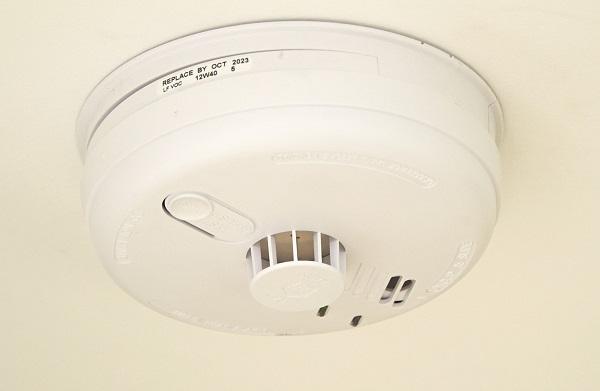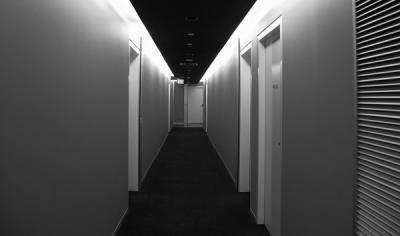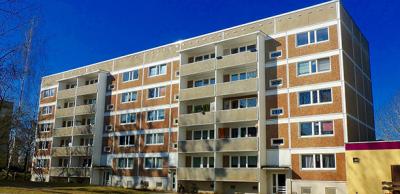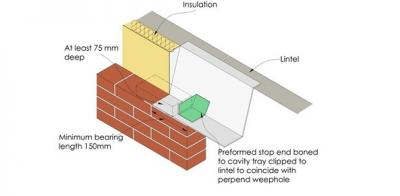The dos and don'ts of mains powered smoke alarms and battery alarms
Most properties in the UK have battery-operated smoke alarms, but mains powered smoke alarms interlinked between floors are the most reliable method of giving early warning in case of fire and must now be installed in all new homes.
Mains-wired smoke alarms are also required in certain types of alteration and extension work. Mount them in the circulation space at every floor level:
- In loft conversions
- When adding new habitable rooms (bedrooms, kitchens, living or dining rooms) above ground floor level
- When adding a new habitable room at ground floor level that doesn’t have its own exit leading outdoors
Installing new interlinked smoke alarms can be disruptive, so think about the need for detection before you start work. Radio-linked alarms are acceptable; as long as the manufacturer can guarantee the battery back-up will last for 72 hours.
Smoke alarm DOs:
- Ensure there's at least one alarm on every storey of the dwelling
- Ensure there's an alarm within 3m of the door to every bedroom.
- Provide a heat detector to the kitchen if it's open plan to the escape route
- Mount them 300mm away from walls and light fittings
- Ensure the electrical installation of the units meets Part P requirements in England and Wales
- Provide instructions to the end user
Smoke alarm DON'Ts:
- Install them above staircases where testing and maintenance is dangerous
- Site them in places where they can become very hot, cold, or subject to a lot of moisture or fumes (bathrooms, kitchens, garages - use a heat detector if need be)
Remember, there are additional requirements for large houses of two or more storeys where one of those storeys exceeds 200m2, so bear this in mind when working on footballers' mansions! If in any doubt, contact your local authority building control team to discuss.
Further information about fire safety
- View a diagram showing where to place smoke alarms and heat alarms
- Download the SCA Guidance on Smoke Control to Common Escape Routes in Apartment Buildings (Flats and Maisonettes)
- Read the Building Regulations Part B Approved Document on Fire Safety for dwellings in England and Wales
Also view: How to protect residents from carbon monoxide poisoning
Please Note: Every care was taken to ensure the information was correct at the time of publication. Any written guidance provided does not replace the user’s professional judgement. It is the responsibility of the dutyholder or person carrying out the work to ensure compliance with relevant building regulations or applicable technical standards.
This article was updated on August 2024
Sign up to the building bulletin newsletter
Over 48,000 construction professionals have already signed up for the LABC Building Bulletin.
Join them and receive useful tips, practical technical information and industry news by email once every 6 weeks.
Subscribe to the Building Bulletin





Comments
Reply to: Mains powered
Submitted 6 years 4 months ago
All of the alarms required as a result of the work you described must be mains powered.
However, from the information provided it isn't clear that the provision of mains powered, interlinked alarms will be sufficient to demonstrate compliance with the Building Regulations.
Please seek further advice from your local building control team. You can find them here: https://www.labc.co.uk/your-local-council-building-control-department — simply enter the postcode of your property and click 'Search'.
Kind regards,
LABC
Chirping alarm
Submitted 6 years 4 months ago
Reply to: Chirping alarm
Submitted 6 years 4 months ago
It would be best to consult your alarm instruction manual to find a solution to this issue. If you don't have it to hand, you can try contacting the manufacturer via their support channels.
Regards,
LABC
(Dim testun)
Submitted 6 years 3 months ago
I would like to keep my existing doors to rooms on the lower floors which are 32mm thick with 4mm panels. What type of fire alarm should be specified and could this be powered from the lighting circuit?
Reply
Submitted 6 years 3 months ago
All dwellings should be protected to at least the standard offered by a Grade D2 Category LD3 fire alarm system, you might need a higher standard depending on the size of the property and the fire risk present.
A Grade D fire alarm system can be powered by a regularly used local lighting circuit in accordance with BS 5839-6. You'll need to discuss whether it's possible to keep your existing doors with your local building control team – find them here: https://www.labc.co.uk/your-local-council-building-control-department – enter your property postcode and click 'Search'.
Regards,
Dalila, LABC
Mains smoke alarm with batteries
Submitted 6 years 2 months ago
Reply to: Mains smoke alarm with batteries
Submitted 6 years 2 months ago
It would be best to replace the back-up battery as soon as possible for safety and peace of mind.
Regards,
LABC
Mains smoke alarms
Submitted 6 years 2 months ago
Reply to: Mains smoke alarms
Submitted 6 years 2 months ago
They are mains-powered smoke alarms but you still need batteries fitted in a mains-powered smoke alarm; this acts as a back-up if the mains power fails.
Regards,
LABC
Large House with new conversion.
Submitted 6 years 2 months ago
Am I right in thinking I can use radio linked alarms which are individually connected to the lighting circuit?
If so do any of these and/or the kitchen heat detector need to be wired in series directly to one another or not?
Many thanks.
Add new comment